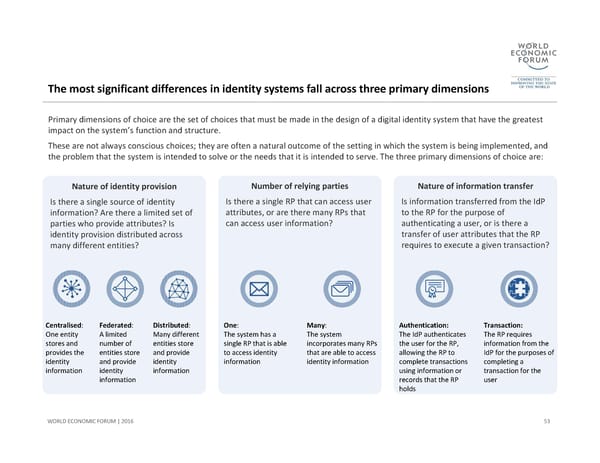The most significant differences in identity systems fall across three primary dimensions 53 WORLD ECONOMIC FORUM | 2016 Primary dimensions of choice are the set of choices that must be made in the design of a digital identity system that have the greatest impact on the system’s function and structure. These are not always conscious choices; they are often a natural outcome of the setting in which the system is being implemented, and the problem that the system is intended to solve or the needs that it is intended to serve. The three primary dimensions of choice are: WORLD ECONOMIC FORUM | 2016 Nature of identity provision Is there a single source of identity information? Are there a limited set of parties who provide attributes? Is identity provision distributed across many different entities? Number of relying parties Is there a single RP that can access user attributes, or are there many RPs that can access user information? Nature of information transfer Is information transferred from the IdP to the RP for the purpose of authenticating a user, or is there a transfer of user attributes that the RP requires to execute a given transaction? Centralised: One entity stores and provides the identity informationDistributed: Many different entities store and provide identity information Federated: A limited number of entities store and provide identity information One: The system has a single RP that is able to access identity information Many: The system incorporates many RPs that are able to access identity information Authentication: The IdP authenticates the user for the RP, allowing the RP to complete transactions using information or records that the RP holds Transaction: The RP requires information from the IdP for the purposes of completing a transaction for the user
 A Blueprint for Digital Identity Page 53 Page 55
A Blueprint for Digital Identity Page 53 Page 55